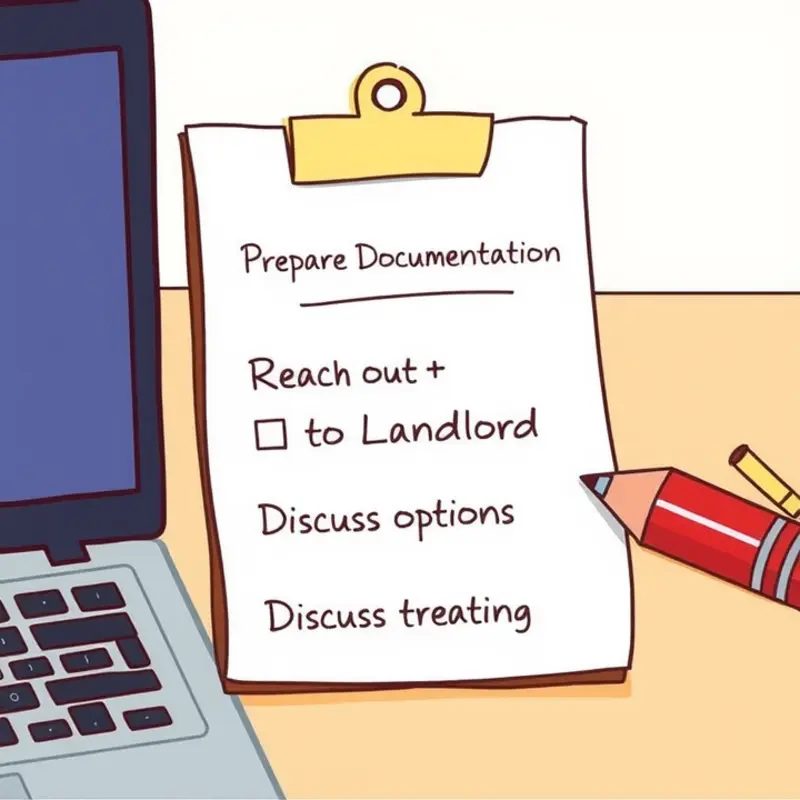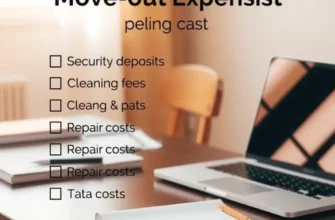For young professionals and first-time renters, understanding lease modifications can significantly impact your financial well-being and living experience. Whether you’re a student, a couple just starting your life together, or a family adjusting to new circumstances, knowing about your lease options is crucial. Lease modifications allow tenants to adjust the original terms of their rental agreements, which can be particularly helpful in uncertain times or when life changes arise. Familiarizing yourself with the process and options available can empower you to make informed decisions and negotiate terms that work for you. This guide will break down essential things to consider when exploring lease modifications, providing you with valuable insights for effective communication with your landlord and ensuring your rights as a tenant are upheld. Let’s delve deeper into how you can navigate this aspect of renting with confidence.
Understanding Lease Modifications: What You Need to Know

Lease modifications play a crucial role in adapting rental agreements to suit evolving needs. Understanding their fundamentals helps renters manage their living situations more comfortably and flexibly. Modifications may occur due to financial constraints, changes in personal circumstances, or landlord-tenant negotiations. Recognizing the types and legal aspects involved ensures informed decisions.
There are several common types of lease modifications, each serving different purposes. Rent reduction agreements can offer temporary or permanent financial relief. These modifications may arise when tenants face unforeseen financial difficulties, balancing the necessity for affordability with maintaining tenancy. Similarly, lease extensions are vital for those wishing to remain in a property beyond the original term. These extensions help avoid the instability of finding a new home at short notice.
Another key type is the early termination clause. Such modifications allow tenants to end their lease before its scheduled completion without penalties. Factors like job relocation or family emergencies could necessitate this change. Additionally, subletting agreements can be valuable for tenants needing temporary relocation. They permit another renter to take over the property temporarily, ensuring financial commitments are met without losing the lease.
Legal considerations are paramount when navigating lease modifications. Both parties must agree to any changes in writing. This documentation should clearly outline the terms, ensuring expectations are understood. It’s imperative to review local laws, as they can vary significantly between regions and influence what modifications are permissible.
Tenants should also consider the original lease’s clauses. Many agreements include provisions detailing conditions under which modifications are allowed. These clauses govern potential alterations and any associated fees, providing a roadmap for permissible changes. Knowledge of these provisions is empowering, allowing tenants to negotiate effectively.
For those facing disputes or misunderstandings regarding lease terms, understanding legal precedents can be beneficial. Enlisting the help of legal professionals or tenant associations can offer guidance. Resources like the legal lease clauses guide can provide deeper insights into complex agreements.
In conclusion, navigating lease modifications demands a balance of clarity, legal knowledge, and proactive communication. By grasping these key considerations, renters can tailor their agreements to better fit their current realities, fostering a more stable and satisfactory living arrangement.
Practical Steps to Modify Your Lease Agreement

Successfully modifying a lease requires a combination of preparation, negotiation, and clear communication. Approaching your landlord with a well-thought-out plan can greatly enhance your chances of achieving lease flexibility. Here’s a step-by-step guide to help you through this process.
First, assess your reasons for wanting a lease modification. Are you experiencing financial hardship, or do you need more space due to a change in your circumstances? Having a clear understanding of your motivation will help you tailor your request. Once you’ve established your reasons, research possible lease modifications to ensure your request is reasonable and feasible.
Document Preparation is crucial. Gather any relevant documents that support your case. For instance, if you’re negotiating for lower rent due to financial difficulties, collect proof of income, recent pay stubs, or unemployment statements. If you’re seeking an extension, provide evidence of your excellent payment history. Such documents will make your case more persuasive.
Next, consider Effective Communication Techniques. Plan a meeting with your landlord to discuss the lease modification in person. Choose a time convenient for both parties, ensuring there are no distractions. During the meeting, articulate your reasons clearly and present your documentation. Acknowledge their position by expressing understanding of their business needs, which can foster goodwill.
When making your case, emphasize mutual benefits. For example, retaining a reliable tenant like yourself is often favorable for landlords compared to seeking new tenants. Highlighting your long-term reliability, such as consistent on-time payments or taking care of the property, can also strengthen your position.
Be prepared for negotiation. Lease modifications often involve compromise. Know your non-negotiables but stay flexible about other terms. For instance, if you seek a rent reduction, you might offer a longer lease term or agree to pay a higher security deposit.
After agreeing on terms, it’s vital to Formalize the Agreement. Draft a lease amendment that accurately reflects the negotiated changes. Both parties should review this document thoroughly before signing. Ensure all modified terms are clearly outlined to prevent future misunderstandings.
As an additional step, familiarize yourself with common legal clauses to better understand the negotiation space, as discussed in this guide on legal lease clauses. This knowledge can offer insights into fair practices and bolster your discussions.
Ultimately, patience and professionalism are key throughout the process. Approach each step with the understanding that both you and your landlord have interests at stake. By preparing thoroughly, communicating effectively, and remaining open to negotiation, you can successfully modify your lease agreement in a way that provides financial clarity and flexibility.
Final words
Lease modifications can lead to a more harmonious living situation if executed thoughtfully and strategically. By understanding the basics of what modifications are and following practical steps to navigate the negotiation process, renters can gain significant advantages in adapting their agreements to better suit their evolving needs. Open communication with your landlord and being prepared with the right documentation are essential to making adjustments that protect your interests while ensuring a positive rental experience. Remember, it’s your home, and you have a right to feel comfortable and secure there, so don’t hesitate to seek out the modifications you need to thrive.









